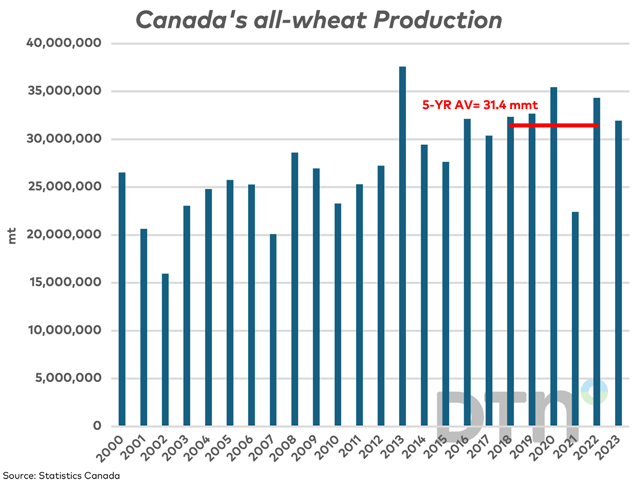
As widely expected, Statistics Canada revised Canadian grain production upward with the release of the first survey-based results.

As widely expected, Statistics Canada revised Canadian grain production upward with the release of the first survey-based results.
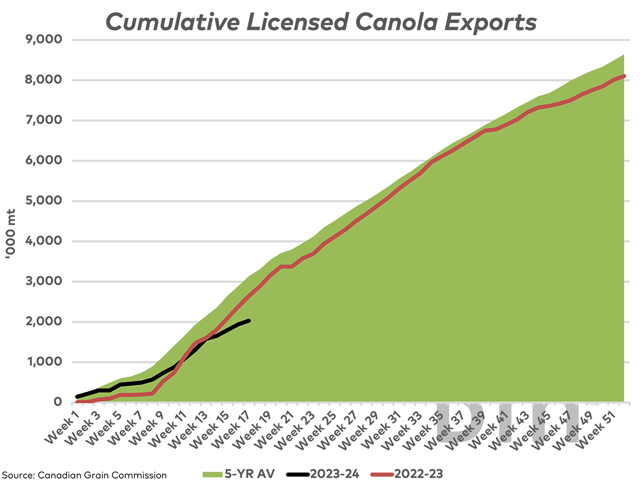
A drop in weekly canola exports in week 17 to 87,000 metric tons has seen cumulative exports fall further behind the year-ago and five-year average pace.
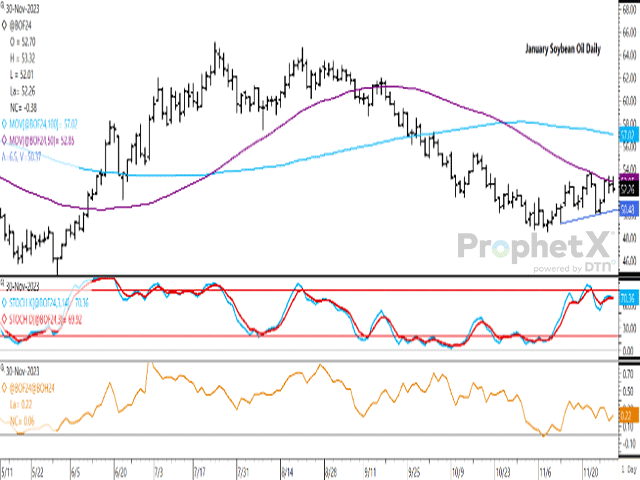
January soybean oil closed lower for a second session on Thursday while failing at the contract's 50-day moving average for a second day.

The Nov. 29 rapeseed trade in Europe led to a break-out higher than the range traded during the past seven weeks.
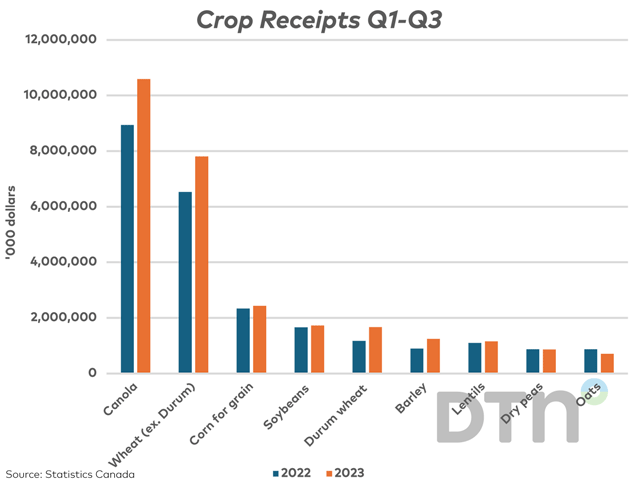
Statistics Canada reported crop receipts over the first three quarters of 2023, or nine months, rose by $4.5 billion from the same period in 2022 to a record level for the period.
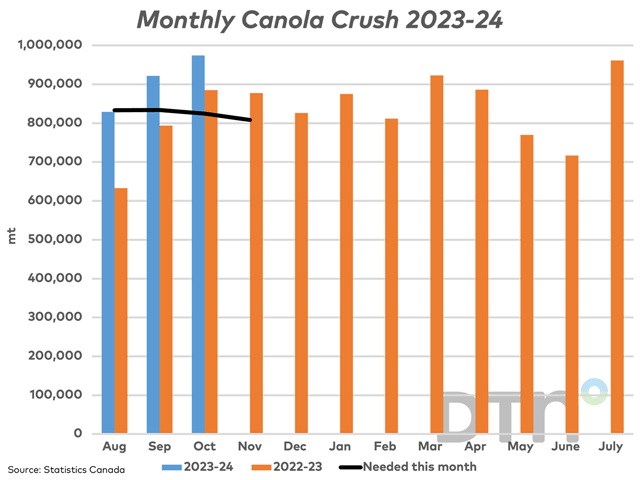
Statistics Canada reported a record canola crush in October while the board crush margin continues to point to historically high returns.
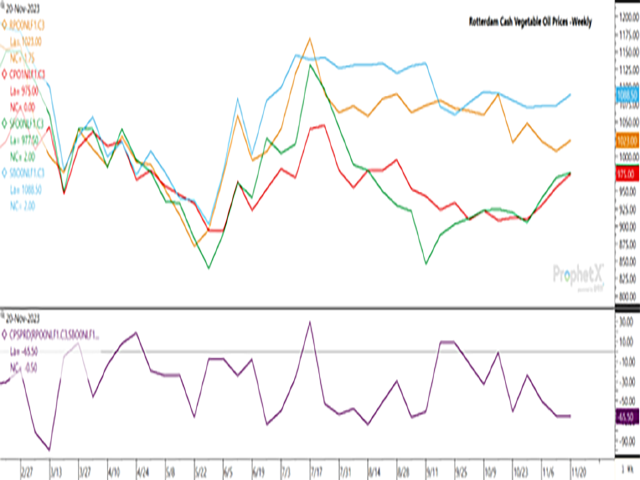
Despite weak futures trade, cash trade for vegetable oils in Europe is showing signs of strength.

The effect of currency moves and government policy across major grain exporters will have implications for markets.
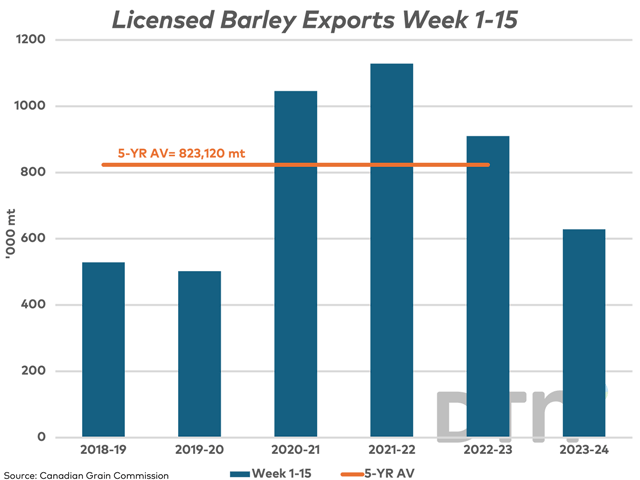
There were very few changes made to AAFC's November supply and demand estimates released this week. The most noticeable changes affected feed supplies.
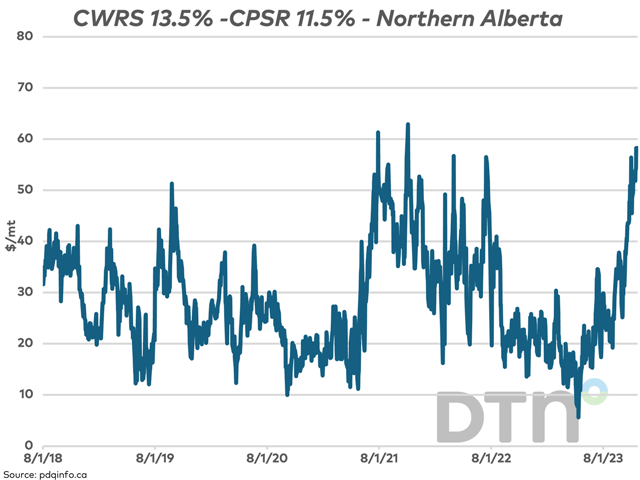
PDQinfo.ca prairie price data as of Nov. 20 shows the Canada Western Red Spring 13.5%/Canada Prairie Spring Red 11.5% spread at the widest seen since in over two years. The move in the spread between the two cash indices in the U.S. would indicate the spread could continue to...
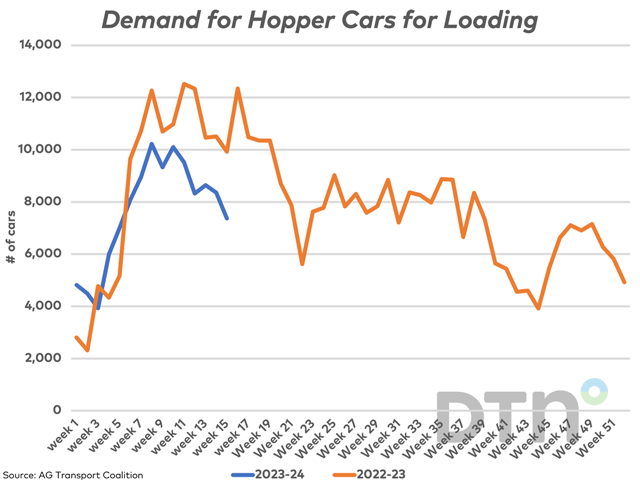
Major Prairie shippers requested 7,369 cars for loading in week 15, the smallest number requested in 10 weeks. In 2022-23, this demand trended lower over the balance of the crop year.

Major Pprairie shippers requested 7,369 cars for loading in week 15, the smallest number requested in 10 weeks. In 2022-23, this demand trended lower over the balance of the crop year.

Major prairie shippers requested 7,369 cars for loading in week 15, the smallest number requested in 10 weeks. In 2022-23, this demand trended lower over the balance of the crop year.
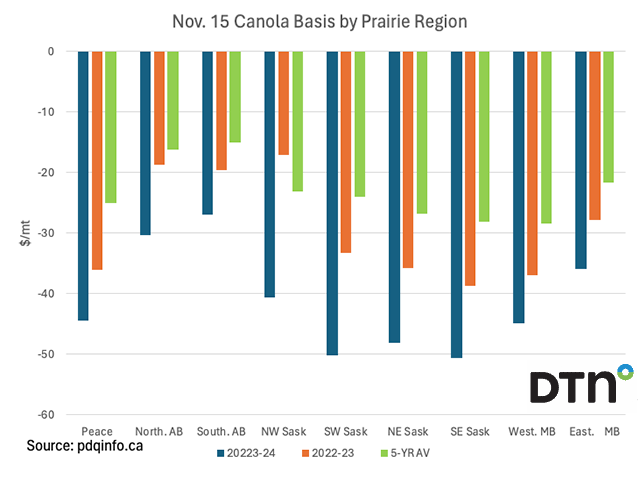
Canola basis has shown modest signs of strength across almost all regions of the Prairies this month, although remain weaker on Nov. 15 than reported one year ago and when compared to the five-year average for each of the nine prairie regions.
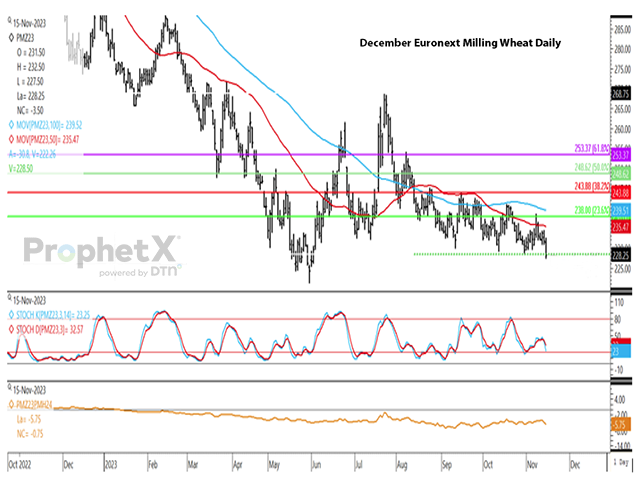
December European milling wheat closed lower on Wednesday, reaching a fresh low in its short-term downtrend.
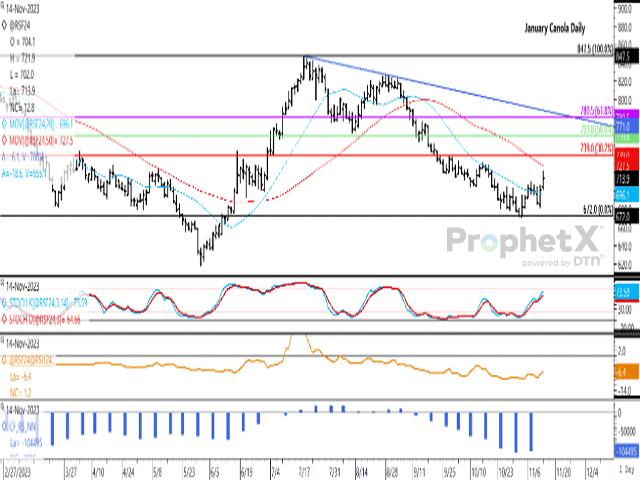
Noncommercial short-covering has pushed the January contract to a three-week high, while the noncommercial net-short position remains close to the largest on record.
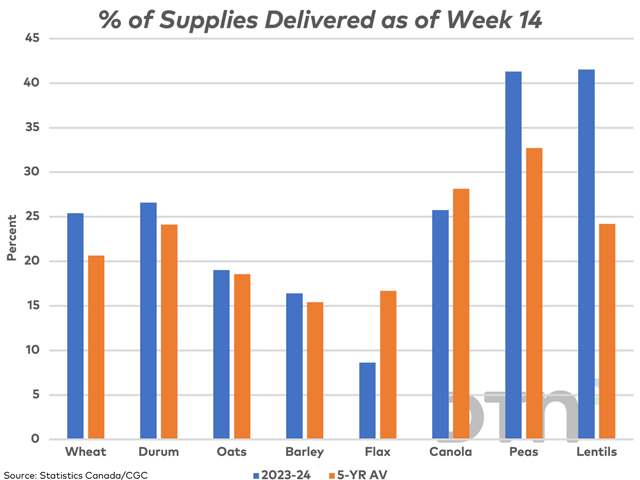
This study looks at producer deliveries of select crops over the first 14 weeks of the 2023-24 crop year.
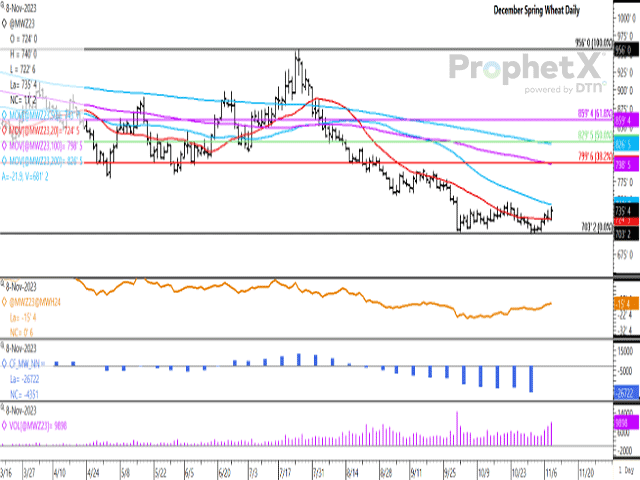
December hard red spring wheat has closed higher for the fourth time in five sessions. HRS is nearing a test of resistance as noncommercial traders holding a record net-short futures position grow nervous.
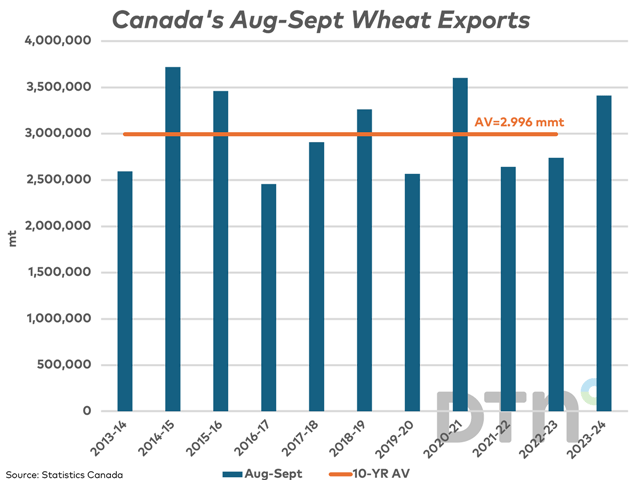
Each month we look at miscellaneous trade data for crops and products as reported by Statistics Canada with a focus on crops where weekly data fails to capture the bulk of activity.
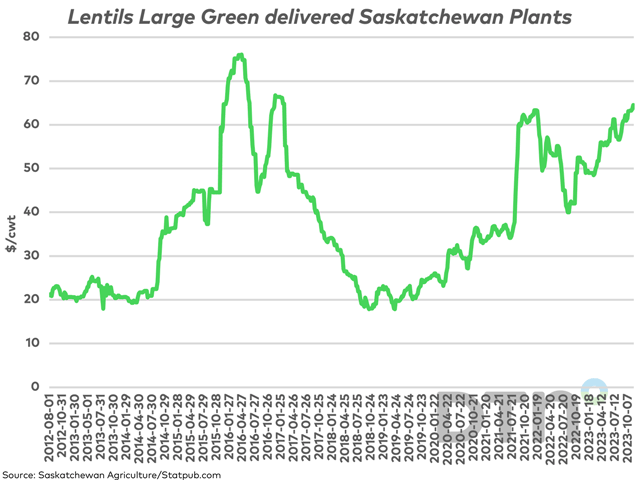
Large green lentil bids continue to push higher, as India reports disappointing summer crop potential and Pulse Canada points to a complicated situation continuing that has not slowed movement overall.
DIM[2x3] LBL[blogs-canada-markets-list] SEL[[data-native-ad-target=articleList]] IDX[2] TMPL[news] T[]
DIM[2x3] LBL[blogs-canada-markets-list-2] SEL[[data-native-ad-target=articleList]] IDX[5] TMPL[news] T[]